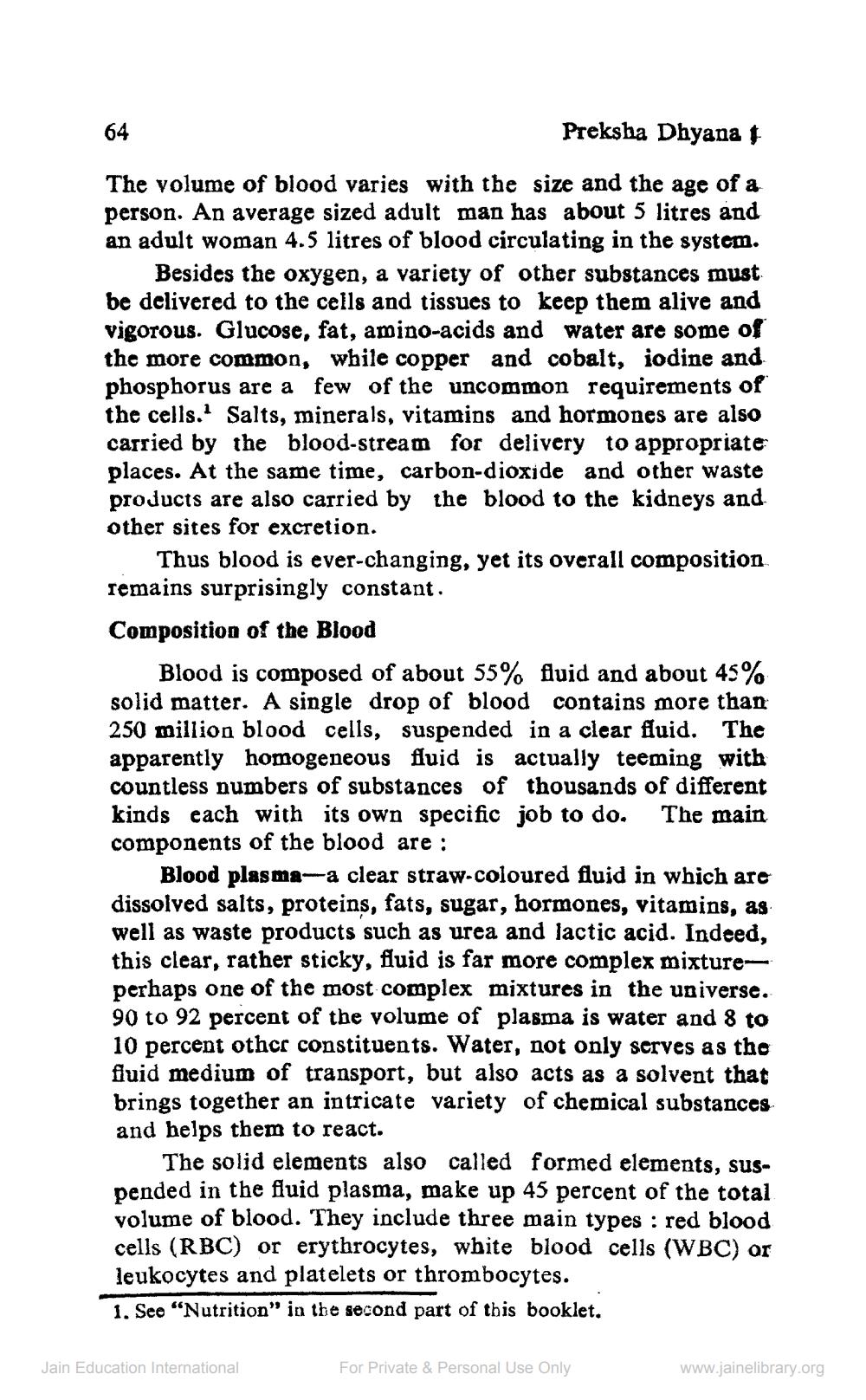________________
Preksha Dhyana 6
04
The volume of blood varies with the size and the age of a person. An average sized adult man has about 5 litres and an adult woman 4.5 litres of blood circulating in the system.
Besides the oxygen, a variety of other substances must be delivered to the cells and tissues to keep them alive and vigorous. Glucose, fat, amino-acids and water are some of the more common, while copper and cobalt, jodine and phosphorus are a few of the uncommon requirements of the cells. Salts, minerals, vitamins and hormones are also carried by the blood-stream for delivery to appropriate places. At the same time, carbon dioxide and other waste products are also carried by the blood to the kidneys and other sites for excretion.
Thus blood is ever-changing, yet its overall composition. remains surprisingly constant. Composition of the Blood
Blood is composed of about 55% fluid and about 45% solid matter. A single drop of blood contains more than 250 million blood cells, suspended in a clear fluid. The apparently homogeneous fluid is actually teeming with countless numbers of substances of thousands of different kinds each with its own specific job to do. The main components of the blood are :
Blood plasma-a clear straw-coloured fluid in which are dissolved salts, proteins, fats, sugar, hormones, vitamins, as well as waste products such as urea and lactic acid. Indeed, this clear, rather sticky, fluid is far more complex mixtureperhaps one of the most complex mixtures in the universe. 90 to 92 percent of the volume of plasma is water and 8 to 10 percent other constituents. Water, not only serves as the fluid medium of transport, but also acts as a solvent that brings together an intricate variety of chemical substances and helps them to react.
The solid elements also called formed elements, suspended in the fluid plasma, make up 45 percent of the total volume of blood. They include three main types : red blood cells (RBC) or erythrocytes, white blood cells (WBC) or leukocytes and platelets or thrombocytes. 1. See “Nutrition" in the second part of this booklet.
Jain Education International
For Private & Personal Use Only
www.jainelibrary.org




